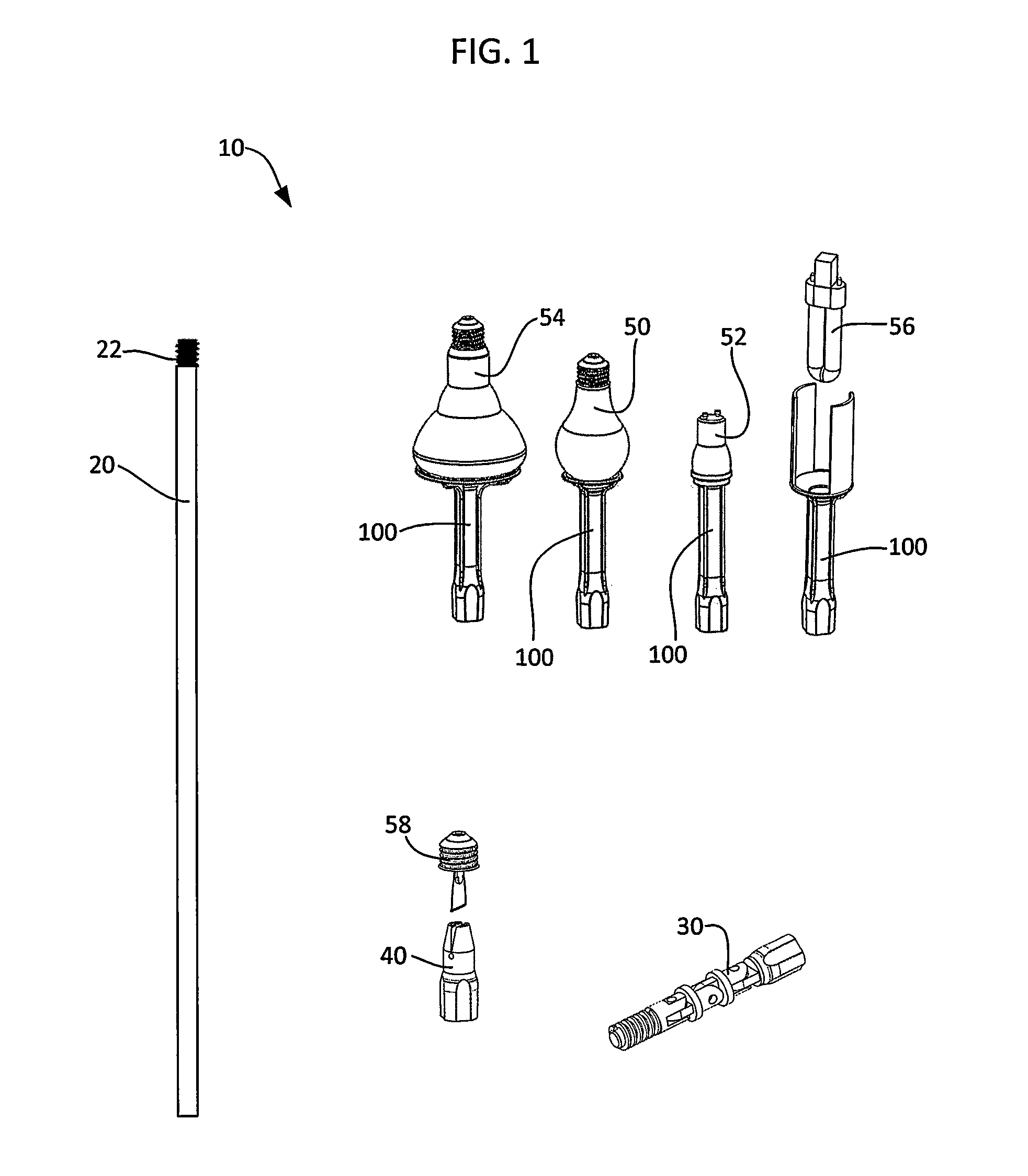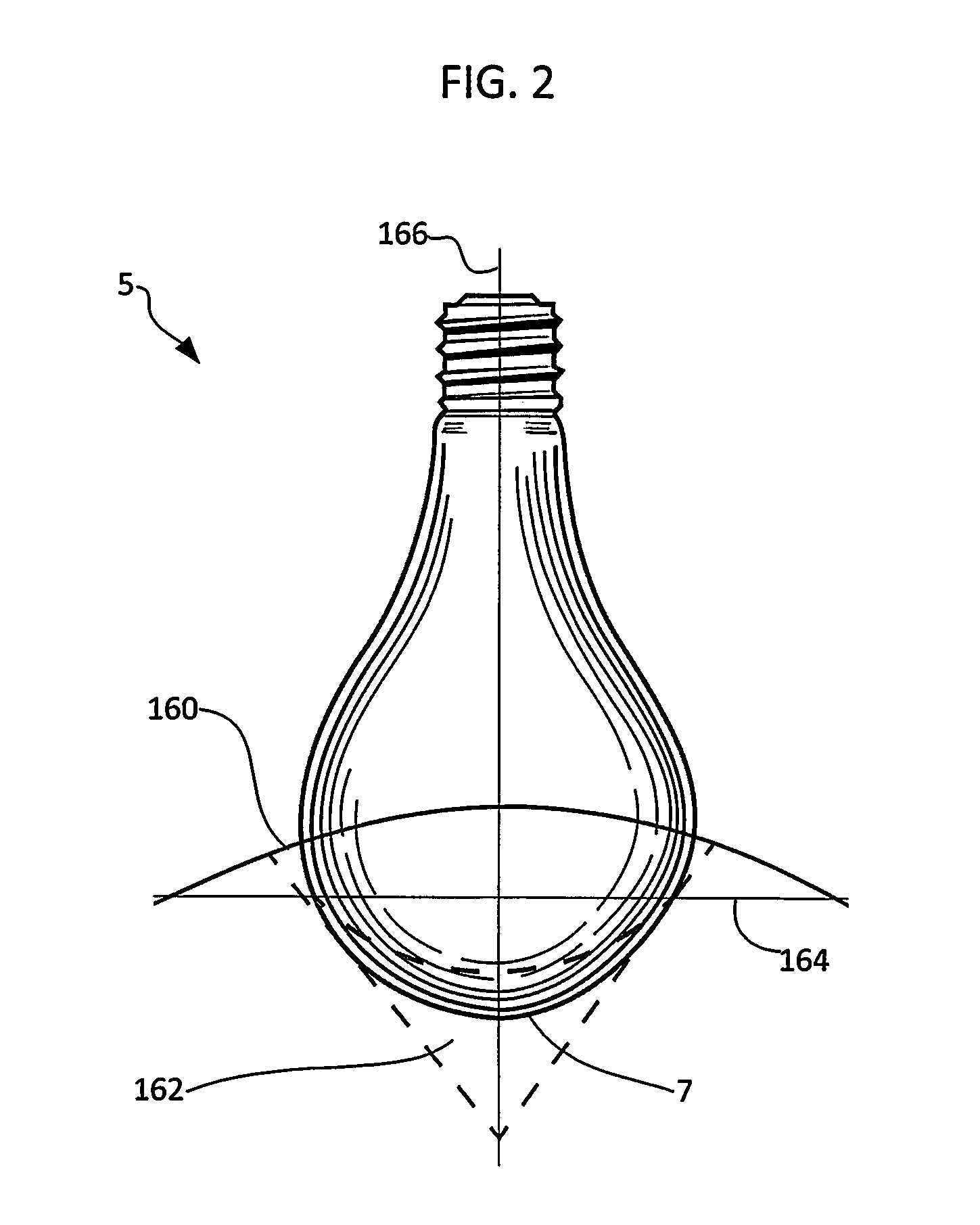Light bulb installation and removal tool
- Summary
- Abstract
- Description
- Claims
- Application Information
AI Technical Summary
Benefits of technology
Problems solved by technology
Method used
Image
Examples
first embodiment
of Gripping Unit
[0062]FIGS. 6-10 illustrate the first embodiment of the gripping unit 110, which cooperates with at least traditional incandescent bulbs 50. Gripping unit 110 attaches to or is integral with handle 104 at its distal end 104a. Gripping unit comprises a platform or bulb cavity 112 having an engagement surface 112a on which the adhesive system 120 attaches. Bulb cavity 112 and engagement surface 112a further define an opening 112b that cooperates with and is in fluid communication with the bore 106 defined by handle 104. Preferably, the bulb cavity 112 is generally concave in shape with a substantially flat release lip 114 around its circumference as shown in the Figures. Adhesive system 120 covers less than all of the engagement surface 112a such that an air channel 116 is defined by the outer edge 120a of adhesive system 120, the exposed surface area of the engagement surface 112a, and the release lip 114 of the bulb cavity.
[0063]The air channel 116 is configured such...
second embodiment
of Gripping Unit
[0068]FIGS. 11-14 illustrate the second embodiment of the gripping unit, which cooperates with smaller bulbs such as mini spotlight bulbs 52. Generally, the second embodiment of the gripping unit is configured like the first gripping unit but with slightly smaller dimensions to accommodate smaller light bulbs and a flat or substantially flat bulb cavity engagement surface 112a. In particular, the diameter of the overall bulb cavity engagement surface 112a plus release lip 114 is preferably about 1.125 inches. Additionally, the adhesive system 120 is preferably circular in shape and optionally further defines a circular opening at the center of each of its components. Further, it is preferable that the opening 122b defined by the mounting component 122 is sized slightly larger in diameter than the opening 124b defined by the adhesive component. Preferably, the openings 122b and 124b range in size between 0.25 inches and 0.3125 inches for the second embodiment of the g...
third embodiment
of Gripping Unit
[0070]FIGS. 15-18 illustrate the third embodiment of the gripping unit, which cooperates with larger light bulbs such as those used with flood lights 54. Generally, the third embodiment of the gripping unit is configured like the first and second gripping units but with larger dimensions to accommodate larger light bulbs. In particular, the diameter of the overall bulb cavity engagement surface plus release lip is preferably about 3.50 inches. Additionally, the adhesive system 120 is preferably circular in shape and further defines a preferably circular opening at the center of each of its components. Further, it is preferable that the opening 122b defined by the mounting component 122 is sized slightly larger in diameter than the opening 124b defined by the adhesive component. Preferably, the openings 122b and 124b range in size between 0.25 inches and 0.875 inches for the second embodiment of the gripping unit.
[0071]The radius required to maintain an appropriate co...
PUM
 Login to View More
Login to View More Abstract
Description
Claims
Application Information
 Login to View More
Login to View More - R&D
- Intellectual Property
- Life Sciences
- Materials
- Tech Scout
- Unparalleled Data Quality
- Higher Quality Content
- 60% Fewer Hallucinations
Browse by: Latest US Patents, China's latest patents, Technical Efficacy Thesaurus, Application Domain, Technology Topic, Popular Technical Reports.
© 2025 PatSnap. All rights reserved.Legal|Privacy policy|Modern Slavery Act Transparency Statement|Sitemap|About US| Contact US: help@patsnap.com



